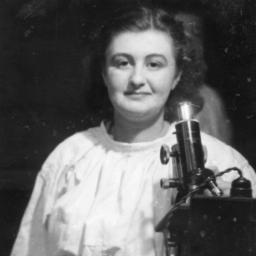Lois Curtis

Lois Curtis was one of the plaintiffs in the landmark Supreme Court case Olmstead v. L.C. (1999) that established the right of individuals with disabilities to live in the least restrictive settings possible. Diagnosed with cognitive disabilities and schizophrenia, Curtis is no longer confined to an institution – she now lives in the community and works as a visual artist and public speaker.
As a child growing up in Georgia, Curtis loved school but struggled due to behavioral issues that resulted from her cognitive and developmental disabilities. Her family lacked sufficient support to care for Curtis the way she needed. She would often wander away from home, causing her mother to call 911 in fear for her safety. When the police responded, they would take Curtis to either jail or to a mental health hospital. Beginning at the age of 11, Curtis found herself in and out of Georgia Regional Hospital’s child and adolescent unit. Soon, Curtis was living full-time in institutional settings like Georgia Regional Hospital.
By the time she was 19, Curtis was miserable at the facility where she was living and made clear her desire to live in the community. As a teenager, Curtis was treated with psychiatric medications that kept her heavily sedated. Like many individuals who possess developmental disabilities and behavioral issues, she was treated by staff trained to deal with patients suffering from mental health conditions but are unfamiliar with the specific needs of those with developmental disabilities. The medications that Curtis took drained her energy and kept her from living a richer, more active life. Curtis began regularly calling the Atlanta Legal Aid Society, asking them to help her win her release from the institutional setting.
Efforts to place Curtis in a personal care home proved inadequate when the home lacked trained staff or any of the supports necessary to care for Curtis. Advocates for Curtis fought on her behalf for support services, but state officials failed to provide them. With nowhere else to go, Curtis returned to the Georgia Regional Hospital. The doctors there eventually admitted that Curtis no longer met the criteria for involuntary confinement, but they offered no options to support Curtis outside the hospital. State officials claimed that caring for Curtis in an institutional setting met their legal obligation and refused to offer any other types of support for her.
In 1995, the Atlanta Legal Aid Society assisted Curtis in filing a lawsuit against the state of Georgia, claiming discrimination under the Americans with Disabilities Act of 1990. The defendant in the case was Tommy Olmstead, the Commissioner of the Georgia Department of Human Resources at the time. Elaine Wilson, another woman who also had cognitive disabilities as well as mental health conditions and sought release from an institution, joined the lawsuit as Curtis’s co-plaintiff. Curtis and Wilson’s attorneys argued that individuals with a disability could not be forced to live in an institutional setting if they could be cared for in a more integrated environment in the community. They won their case in federal district court in 1997, but the state of Georgia appealed the decision, citing insufficient funds to care for disabled individuals in more integrated settings. The federal appeals court affirmed the district court’s decision the following year. Once more, the state of Georgia appealed the case, this time to the United States Supreme Court.
In 1999, the Supreme Court ruled in favor of Curtis and Wilson. The Supreme Court’s decision held that unnecessary institutionalization constituted a violation of an individual’s civil rights. Justice Ruth Bader Ginsburg wrote that institutionalizing people who are capable of living in community settings reinforces assumptions that they are “incapable or unworthy of participating in community life.” The ruling called for state and local governments to develop more services and opportunities for disabled individuals and to provide these services “in the most integrated setting appropriate to the needs of qualified individuals with disabilities.” The impact of the Olmstead decision expanded when later cases made it clear that the ruling applied to all institutions receiving state and federal funding, not just psychiatric hospitals like the ones Curtis and Wilson sought to leave.
After the Olmstead decision, Curtis began living in group homes and host homes in the community, but it took time to find the right fit for her. The effort to create more community support systems (such as counseling, supported employment, and assistance managing daily tasks) as an alternative to institutionalization largely developed due to the pivotal ruling in Curtis’s Supreme Court case, but still proves urgent today. Now, Curtis lives in an apartment and has support systems including a professional aide and a ‘micro board’ that meets regularly to discuss how to assist Curtis with her personal needs and goals.
Curtis is a visual artist and has exhibited her work in several galleries in Georgia. She is best known for her portraits, which capture strong emotions with their bold colors and demonstrate how much she values personal relationships. A career highlight came on June 20, 2011 when Curtis presented one of her self-portraits to President Barack Obama in the Oval Office. Curtis serves as a public speaker across the country, telling audiences about her life and work as well as selling her art. Curtis has also taken up singing and song-writing and enjoys traveling, spending time with friends, and attending church, among many other interests.
The Association of People Supporting Employment First (APSE), a national organization that works for the full inclusion of people with disabilities in the workplace and the community, now offers the Lois Curtis Award, in honor of Curtis’s exceptional legacy as an advocate for individuals with disabilities.
Appelbaum, Lauren. “Lois Curtis: Woman with Disabilities Fights for Freedom For All.” RespectAbility. March 15, 2019. Accessed Nov. 28, 2021. https://www.respectability.org/2019/03/women-disabilities-lois-curtis/
“APSE Awards the Lois Curtis Award.” APSE. July 9, 2020. Accessed Nov. 28, 2021. https://apse.org/apse-awards-the-lois-curtis-award/
Jamieson, Sue. “Olmstead Champion Meets the President.” The White House: President Barack Obama. June 22, 2011. Accessed Nov. 28, 2021. https://obamawhitehouse.archives.gov/blog/2011/06/22/olmstead-champion-meets-president
Katz, Pam. “This Black History Month, We Salute Lois Curtis.” The Arc. Feb. 25, 2020. Accessed Nov. 28, 2021. https://thearc.org/blog/this-black-history-month-we-salute-lois-curtis/
“Olmstead v. LC: History and Current Status.” Olmstead Rights. Accessed Nov. 28, 2021. https://www.olmsteadrights.org/about-olmstead/#The%20Olmstead%20lawsuit
Rayne, Robin. “Unlocked: The Lois Curtis Story.” Assignment Atlanta. Nov. 27, 2010. Accessed Nov. 28, 2021. https://assignmentatlanta.wordpress.com/2010/11/27/unlocked-the-lois-curtis-story/
Weddle, Angela. “Black History Month: Lois Curtis Artist and Disability Advocate Paved the Way.” The Art of Autism. Feb. 1, 2021. Accessed Nov. 28, 2021. https://the-art-of-autism.com/disability-history-month-lois-curtis-artist-and-disability-advocate-paved-the-way/
MLA – Brandman, Mariana. “Lois Curtis.” National Women’s History Museum, 2021. Date accessed.
Chicago – Brandman, Mariana. “Lois Curtis.” National Women’s History Museum. 2021. www.womenshistory.org/education-resources/biographies/lois-curtis
Image Credit: Copyright Robin Rayne/ZUMA.
Olmstead Rights. https://www.olmsteadrights.org/




